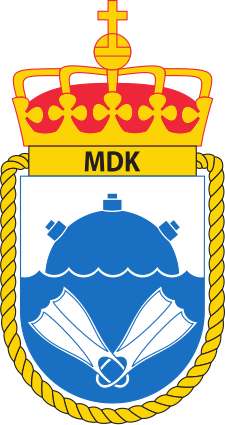| Norwegian Naval EOD Command | |
|---|---|
| Minedykkerkommandoen (MDK) | |
 | |
| Active | Frogmen: 1953 – 1968 MDK: 1968 – current |
| Country | |
| Type | Clearance diver |
| Garrison/HQ | Haakonsvern Naval Base Ramsund Naval Base |
| Colors | Blue beret flash on navy beret |
| Engagements | Operation Enduring Freedom International Security Assistance Force Operation Pickaxe-Handle Operation Atalanta Operation Ocean Shield Macedonia Conflict Operation Recsyr |
Minedykkerkommandoen (MDK) or Norwegian Naval EOD Command is a clearance diver group. MDK is subordinate to the Royal Norwegian Navy. MDK is located at Haakonsvern Naval Base in Bergen and Ramsund Naval Base, in vicinity of Harstad.
Contents
The Commando is part of the naval contribution to the Norwegian Armed Forces Intervention Force, and the command's personnel have taken part in operations in Afghanistan, Iraq, Baltic states and Mediterranean, among others. The unit is often on assignment for the Norwegian Police Service with bomb disposal. [1] [2] [3]
